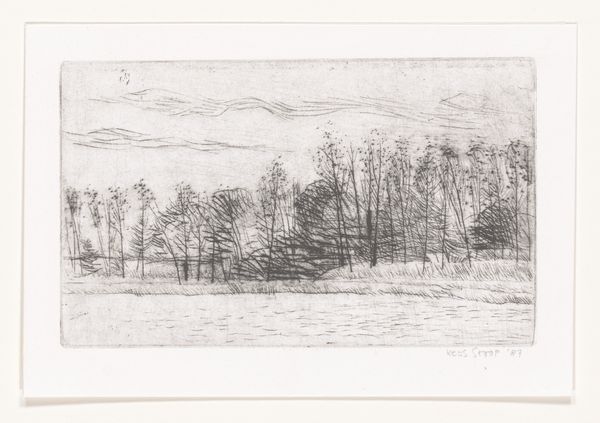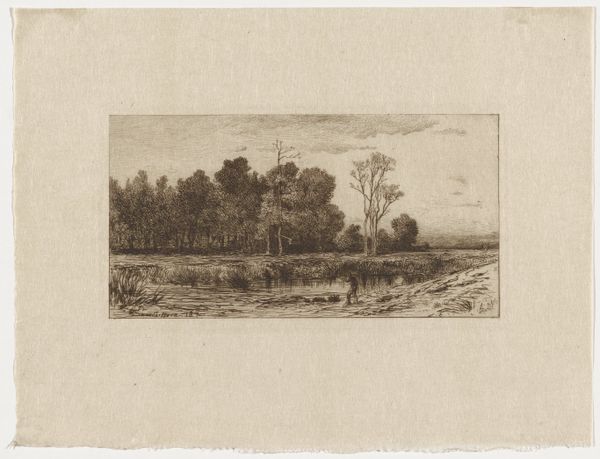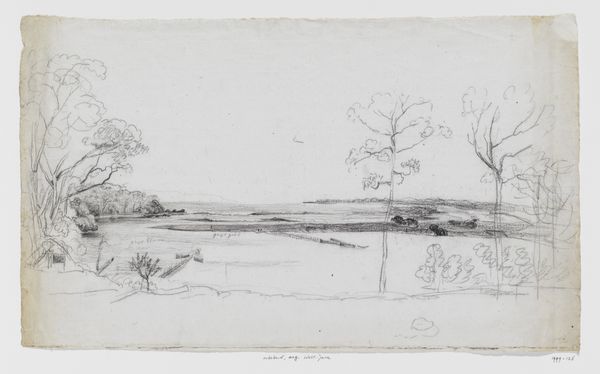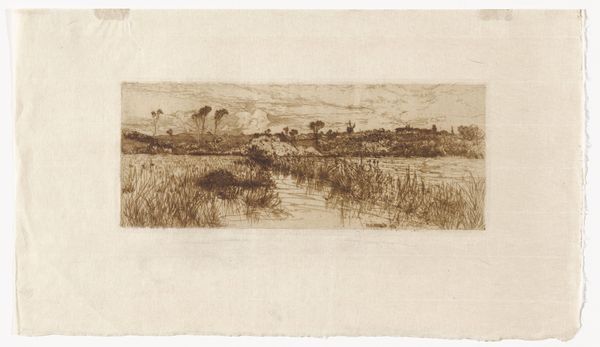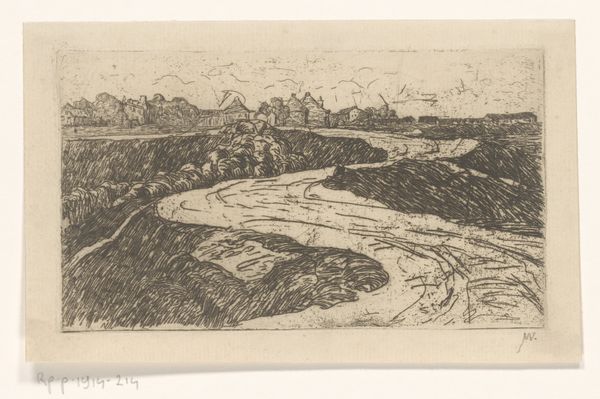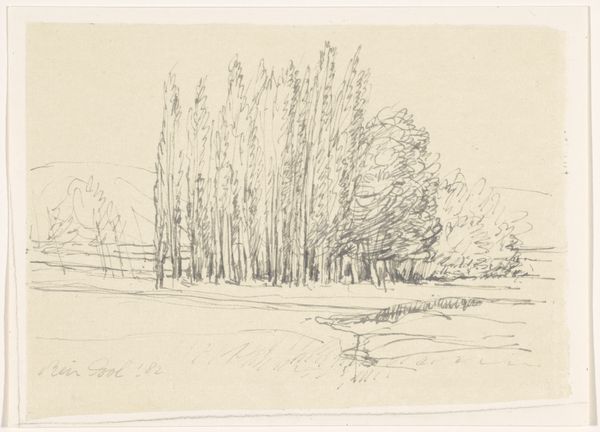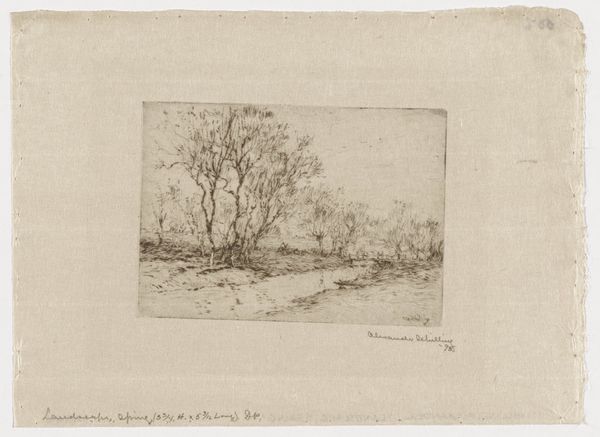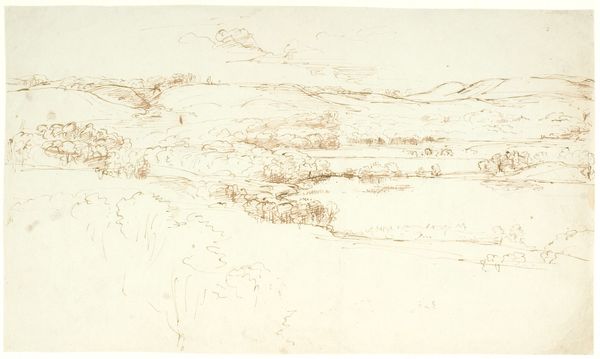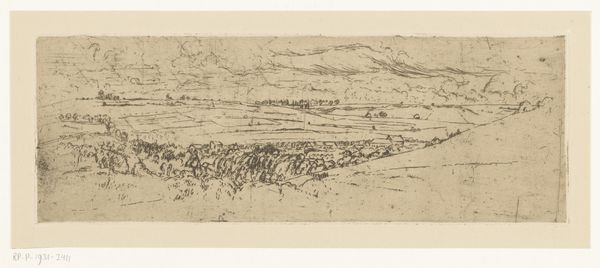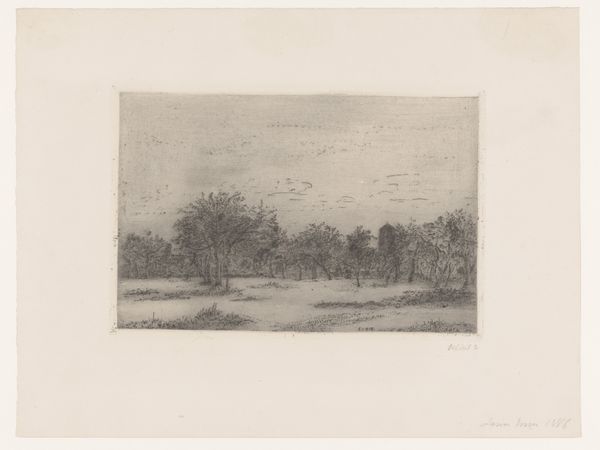
print, etching
# print
#
etching
#
landscape
#
etching
#
abstraction
#
realism
Dimensions: height 143 mm, width 240 mm
Copyright: Rijks Museum: Open Domain
Curator: Let's turn our attention to "Landschap met velden en bomen," or "Landscape with Fields and Trees," an etching crafted by Johannes Löhr sometime between 1892 and 1928. Editor: My first impression is how delicately rendered this scene is. It feels almost ephemeral, a captured moment fading back into memory. Curator: Indeed. Löhr's technique here provides us a view into the evolving landscape traditions of the late 19th and early 20th centuries. Etchings like this were often more accessible, playing a crucial role in disseminating images to a wider audience, democratizing art consumption in a way. Editor: I am immediately thinking about ideas of land ownership and how representations like these—seemingly bucolic and benign—often obfuscate histories of exploitation, maybe particularly those of rural workers. Who has access to this "landscape"? Who benefits? Who is absent? Curator: It’s an astute point. The print aesthetic allows Löhr to express a stark and sobering meditation on land usage as he presents the industrial landscape in the background of the print. I’m further struck by how the layering technique results in stark contrasts in textures to express something that photographs may lack, a deeply felt atmospheric condition. Editor: And those fields stretching into the distance... they beckon, don't they? There’s something subtly haunting here as Löhr captures this natural panorama, maybe echoing the loss of a specific way of life, something we now assign even greater consideration in lieu of discussions surrounding climate change and human development. Curator: Absolutely. Looking at it from the view of this museum collection’s origins, the social and economic conditions prevalent around this etching can be further explored to generate understanding. What you say about contemporary readings of the scene seem accurate! Editor: Well, regardless, its existence and creation should allow audiences to meditate on Löhr’s historical and social surroundings. These beautiful lines on the page are like whispers, beckoning the modern observer to hear.
Comments
No comments
Be the first to comment and join the conversation on the ultimate creative platform.
